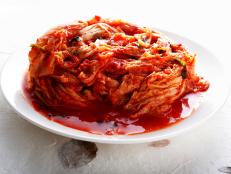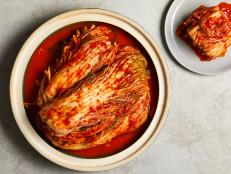5 Delicious Recipes to Make for Chuseok
Gather at the table to celebrate the season's bounty.

Teri Lyn Fisher
Chuseok, Korean Autumn Festival (also known as Hangawi), marks the 15th day of the 8th month according to the lunar calendar. It is a major holiday in South Korea — you might think of it as Korean Thanksgiving. Families come together during this holiday to give thanks for the year past and wish luck for the upcoming year by eating, drinking and playing games together. On the eve of Chuseok, families gather and spend most of the time preparing the traditional foods like songpyeon, japchae, galbijjim and jeons to celebrate the bounty of harvest and give thanks to the ancestors. Here's how to make some of these delicious dishes.
Songpyeon (pictured above)
"Song" translates as pine tree (these rice cakes are traditionally steamed over pine leaves), and "pyeon" means a piece or rice cake. The cakes represent abundance and prosperity and are enjoyed by family and friends and offered to ancestors in gratitude for the bounty of the harvest. There are many options for coloring, folding, shaping and filling songpyeon. This recipe makes white, vibrant yellow and deep green ones since these are the colors I grew up making and eating. The cakes are typically folded into half-moon shapes, but I use a different folding method I learned watching my grandmother and mother. Sweetened bean and other fillings are popular, but a sesame seed filling is my favorite and included here. Songpyeon is traditionally steamed over pine needles; here we use a layer of cheesecloth for simplicity. In my opinion these rice cakes are best eaten at room temperature but you can certainly enjoy them hot out of the steamer.

Teri Lyn Fisher
Jeon is a catch-all term for the popular pan-fried battered food in Korean cuisine, and wanjajeon — or egg-battered meatballs — are among the more popular types. (The dish also goes by dongeurangddeng.) It is one of my favorite dishes to eat during Chuseok, or as an appetizer or side dish at any meal. The meatballs are best eaten hot and fresh but you can freeze them in resealable plastic bags, then thaw overnight in the refrigerator and pan-fry (or air fry!) again briefly before serving.

Teri Lyn Fisher
Of the many types of jeon in Korean cuisine, saeng sun jeon (fish jeon) is among the more popular, especially during the autumn festival Chuseok. Don't stop there: The crispy fish strips are simple enough to make anytime you want a tasty banchan or appetizer. This traditional recipe calls for cod fillet, but any other flaky white fish would work well too.

Teri Lyn Fisher
Japchae is a sweet and savory stir-fried noodle dish that you can make with as many or as few vegetables as you like. (The word “jap” in Korean means to gather and mix many ingredients; “chae” means vegetables.) Served at special occasions, such as weddings, birthdays and holidays, as well as for everyday meals, the dish is generally prepared in large quantities and is meant to be shared. This recipe takes no shortcuts and calls for each component to be cooked and seasoned individually so the flavors are cleaner and more distinct in the finished japchae.

Matt
This braised short rib dish is typically so labor-intensive that it is reserved for special occasions, with the process stretching out over a couple of days. The first day generally involves soaking the short ribs in water; the second day involves parboiling the ribs over low heat and regularly ladling out any impurities. Using the Instant Pot, we created a version of the dish that takes a fraction of the time and equipment, but doesn’t compromise on flavor. And for a touch of freshness, we add the vegetables at the end of the cooking process.
Related Links:


































